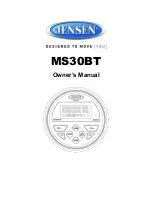
Administering the WMIC
Managing the System Time and Date
42
Cisco 3200 Series Wireless MIC Software Configuration Guide
A device running NTP automatically chooses as its time source the device with the lowest stratum
number with which it communicates through NTP. This strategy effectively builds a self-organizing tree
of NTP speakers.
NTP compares the time reported by several devices and does not synchronize to a device whose time is
significantly different than the others, even if its stratum is lower.
The communications between devices running NTP (known as
associations
) are usually statically
configured; each device is given the IP address of all the devices with which it should form associations.
Accurate timekeeping is possible by exchanging NTP messages between associated devices. However,
in a LAN environment, NTP can be configured to use IP broadcast messages instead. This alternative
reduces configuration complexity because each device can simply be configured to send or receive
broadcast messages. However, in that case, information flow is one-way only.
The time kept on a device is a critical resource; you should use the security features of NTP to avoid the
accidental or malicious setting of an incorrect time. Two mechanisms are available: an access-list-based
restriction scheme and an encrypted authentication mechanism.
Cisco’s implementation of NTP does not support stratum 1 service; it is not possible to connect to a radio
or atomic clock. We recommend that the time service for your network be derived from the public NTP
servers available on the IP Internet.
Figure 2
shows a typical network example using NTP.
If the network is isolated from the Internet, Cisco’s implementation of NTP allows a device to act as
though it is synchronized through NTP, when in fact it has determined the time by using other means.
Other devices then synchronize to that device through NTP.
When multiple sources of time are available, NTP is always considered to be more authoritative. NTP
time overrides the time set by any other method.
Several manufacturers include NTP software for their host systems, and a publicly available version for
systems running UNIX and its various derivatives is also available. The NTP software allows host
systems to be time-synchronized as well.
















































